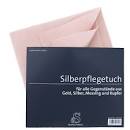-
Lohff & Pfeiffer
About Lohff & Pfeiffer
Iimprint
Contact
Newsletter
Location
L&P team
- Instruments
General
Trade options
About clarinet
Search specific instrument
Ab-clarinet
Eb-clarinet
D-clarinet
C-clarinet
Bb-clarinet
A-clarinet
Mozart basset-clarinet A
G-clarinet
Bassethorn F
Alto-clarinet Eb
Bass-clarinet
Contraalto Eb-clarinet
Contrabasse Bb-clarinet
German-Albert system Bb
Reform Boehm A & Bb
Peter Bastian Instruments
Plateau clarinets
Quartertone clarinet
- L&P Optimization
Optimization
Customization
Specialities
Special Keywork
- Accessories
General
Care products
For instruments
Reeds
Tools for reeds
Straps and hand rests
- Repair
Book time
About Repair
Maintenance
Plating-Surface treatment
Pads
Padding style
Cracks
Tone hole problems
Joints
- Tips & Advice
How to..
Videos
Worldwide external information
Problems & help
Education & learning

.Key polish
Silver Oxidation
Dark, discolored flaps don't mean that the silver has disappeared, it's just oxidized. There are good chemical solutions to remove sulfur that do not remove the silver and bring it back to the desired shine. However, all keys have to be stripped of pads and corks. This can best be done in the context of a major repair.
Silver Polishes pic 2
In contrast, all types of silver polishes, such as silver creams or polishing cloths, will physically polish and wipe the oxidized layer of the keys and remove the silver. If you want to polish your instrument, do it rarely. It shines again, but it doesn't play any better. Pic_2
Your environmental Impact
The best way to prevent silver oxidation is to keep the instrument sulfur-free. You will find sulfur in your sweat and in the air. The amount of sulfur content in your sweat also depends on what you eat. Sulfur-containing foods such as garlic can lead to increased oxidation.
General environmental Impact
Air pollution is the biggest enemy. Therefore, after playing, always clean your instrument with a clean cloth and put it back in the case. Also include a silver protection strip . Close the box and make sure the instrument is upright. In this way, moisture still in the instrument can drain off more easily and the wood does not warp.
Hard Rubber
Many mouthpieces are made of rubber. It contains sulfur. Especially new mouthpieces can, therefore, discolor the silver-plated keys. Keep the mouthpiece away from the instrument, preferably in a separate mouthpiece case or pouch.
Silver Antioxidant Protection
We can put a protective layer on the silver plating which causes a substantial reduction in the oxidation. This can be done in connection with a repair.
Help us to get better
Was this article helpful?
Comments, additions or questions are always welcome at: info@clarinet.dk(C)2011 - by Lohff & Pfeiffer USA-6220 Rhode Island Ave-Riverdale Park MD 20737 - USA - Phone: (812) 340-0595 & 415 470 6879 - info@clarinet.dk - Instruments






